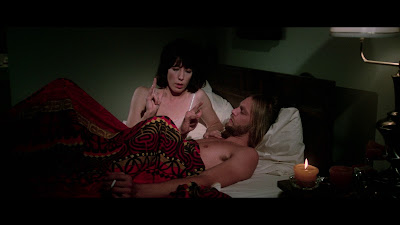Despite or because of his maverick status, Altman occupies a central place in the development of American cinema in the bringing together and the synthesis of certain tendencies. He successfully inserted himself into the years of uncertainty following the end of old Hollywood in the face of the rapid growth of the television audience and the failure of big budget (family) entertainments to deliver the required audiences following the false dawn of The Sound of Music (1966).
It has been noted elsewhere that critics and scholars writing on Altman faced the particular challenge that his body of work, more than most, resists interpretation and being narrowed down to a single formula or a single set of meanings. It was marked by a consistently open approach to risk taking.
When the dust settled on the turmoil of the late 60s-early 70s something called the New Hollywood began to emerge. The studio moguls and the Fordist production line division of labour had gone and multinational corporations were taking over the business, authority in the main being shared between what Coppola referred to as “people who had no right to be running the studios” which survived only in name. By right Coppola believed it was the creators of the art, the auteur directors, who should be in control and he was already working on a strategy to realise this.
Success at the box office 1972-5 (see the entry on Coppola in this series) looked as though what David Cook terms the “Auteurs Manqué and Maudit” might prevail. Mediating aesthetically and culturally between the generations were Penn, Kubrick, Peckinpah and Altman who, all except Kubrick, received their basic training in television. The other auteur strand was the “film school” generation of Coppola, Lucas, Scorsese, Spielberg, and De Palma who as a group were “attempting to parlay the creative freedom of the late sixties and early 1970s into auteurist careers.” While attempting to do this collectively, the two groups produced a number of remarkable path-breaking films, some crucially meeting unprecedented box office success.
They also shared with the French ‘nouvelle vague’ directors a sense that this was “their time in history” and the belief that only talent and will was needed for success (Cook 98)
In between was what Cook refers to as the Easy Rider “youth cult” bubble given body by the rapidly expanding 16-30 audience demographic, encouraging the employment of relatively untested directors such as Mike Nichols, Peter Bogdanovich, William Friedkin, Bob Rafelson, Hal Ashby, and Alan Pakula. It was an environment in which originals like John Cassavetes and Terrence Malick also had an opportunity to prosper (ibid 99).
 |
| Lily Tomlin, Keith Carradine, Nashville |
In surveying the seventies, Richard Corliss in ‘Film Comment’ (16/1 1980) noted that “if a Zeitgeist director is a person who expresses the best and the most of his time, then Altman is the director of the Seventies as surely as Jean-Luc Godard was the director of the Sixties. Whereas Godard gives lectures, Altman throws parties. Most of his movies don’t need to be solved, but to be experienced. His radicalism is sneaky; he’s a social critic, not a political dogmatist (though sometimes, as in Nashville and A Wedding, he is a social dogmatist)…. He makes his viewers discover what’s important by themselves - gives them hats, horns, and a sense of participation. He treats his actors in the same way, making them co-conspirators in the creative process… The one similarity between them,” Corliss concludes, “is that they both worked their butts off (Godard sixteen films in the Sixties, Altman fourteen in the Seventies.”
Kubrick in his ‘one-offs’, took control of the (modernist) artist’s prerogative to activate ambiguity leaving ‘excessive’ scope for the viewer/reader’s imagination.
 |
| A Wedding |
This he did by extended contemplation requiring multiple retakes notoriously as much as 40-50 times in order to ‘decide what he wanted,’ Rosenbaum suggests (see Part 6 (4) on Kubrick). Kubrick and Altman both developed the use of the zoom lens during the 1970s. Cook comments that Altman’s use was “essentially non-demonstrative, sometime even subliminal, approximating the mental processes of the viewer…refocussing on significant details in a seemingly arbitrary field…ideally suited to his sense of American social reality as both ambiguous and random” (363). In comparison Kubrick’s resort to the zoom was ‘more restrained and magisterial’ but no less decisive in terms of aesthetic design. His DP on Barry Lyndon, John Allcott, told Michel Ciment that Kubrick “used the zoom integrally throughout and not simply to speed-up production…Each time, it became an image in itself, and not , as is usually the case, [for] moving from one point to the other.”
*************************
Previous entries in this series can be found if you click the following links
Notes on canons, methods, national cinemas and more
Part Two - Defining Art Cinema
Part Three - From Classicism to Modernism
Part Four - Authorship and Narrative
Part Six (1) - The Sixties, the United States and Orson Welles
Part Six (2) - Hitchcock, Romero and Art Horror
Part Six (3) - New York Film-makers - Elia Kazan & Shirley Clarke
Part Six (4) - New York Film-makers - Stanley Kubrick Creator of Forms
Part Six (5) ‘New Hollywood’ (1) - Arthur Penn, Warren Beatty, Pauline Kael and BONNIE AND CLYDE
Part Six (6) Francis Ford Coppola: Standing at the crossroads of art and industry

No comments:
Post a Comment
Note: only a member of this blog may post a comment.